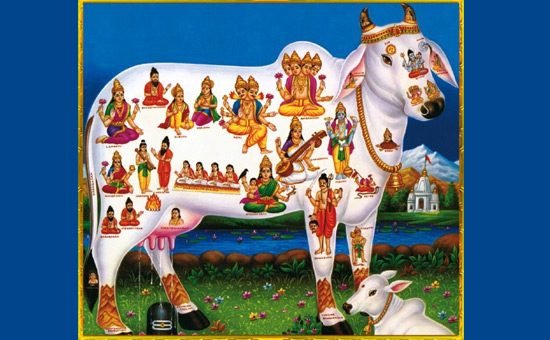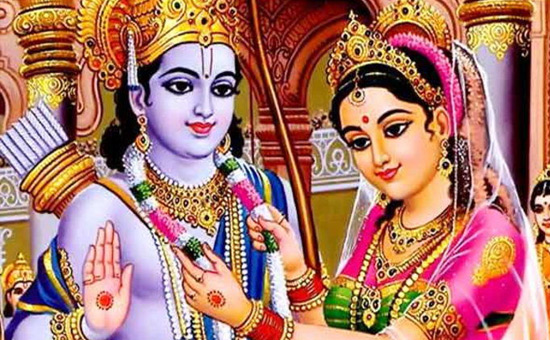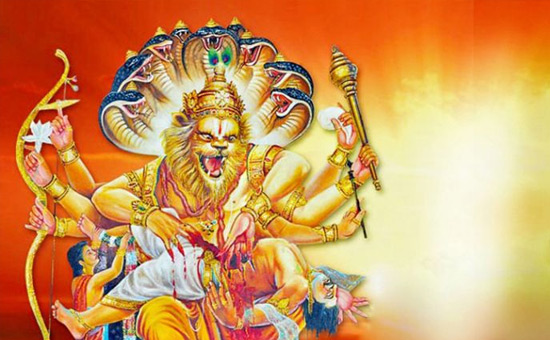-
This part tells you stories of
Kamadhenu, Sita Navami and Narasimha Jayanti.
The first lot of stories covered Guru,
significance of Ganga Saptami and Sambaji Maharaj, son of Shivaji. To read part
ONE
Part two covered Mohini Avatar, Tiger stories Ayyappa and Mother’s Day. Read here
Why did I start writing these Stories? As a mother of three I have realized
that many children are deprived of hearing tales that are Indian in origin.
This could be for various reasons, an important one being that parents themselves
do not know these tales.
The desire to learn English and about
Western Nations meant that atleast two generations were fed tales from the West
namely Sleeping Beauty, Cinderella, etc. Because of this when you ask a child
to write an essay of their favourite character they will write about Santa
Claus and Snow White but not Shivaji.
So I took it upon myself to write short stories about India’s cultural heritage. The stories have been written in such a way that they can be read to children. At the same time I added snippets of our culture, rituals, shlokas, food, etc. so that children get to know about them. Must add that these stories are not meant to be scholarly pieces of work.
 Kamadhenu
Kamadhenu KAMADHENU
A verse from Chapter 9.26 of the Bhagavad Gita reads
-
patram pushpam phalam toyam
yo me bhaktya prayacchati
tad aham bhaktyupahritam
asnami prayatatmanah
‘If one offers Me with love and devotion a leaf, a flower, fruit or water, I will accept it.’
If one were to carefully analyze this statement one would realize that the only living God who can physically accept this every day from anybody is the Holy Cow – Gou Mata.
Let me tell you a story about GouMata today. She is truly Vishwasya Matarah.
Once, a pig and a cow became
friends. The owner of the farm would come and feed the cow daily with total devotion.
In Bharat, food is first offered to the cow and only then family members sit to
eat. This offering is called Gou-grass. Even in cities where people do not keep cows in their homes,
they try to offer some food to the cows every day especially on festive
occasions or if a Puja is performed.
One day the pig said “I don’t understand why everyone loves you so much … I don’t demand much, my piglets too are cute, make a good pet & also satisfy man’s hunger. We are not much different. Then why are you considered so special?”
The Cow replied very gently, “Because I give and give when I am alive.” What all does the Cow give us? She gives us milk, gou-mutra and dung.
From the milk, we make curds, buttermilk, butter, ghee, cheese. Milk, curds, ghee are also used to make the delicious ‘panch-amrit’ for any Puja. Gou-mutra and Cow dung are great as fuel and fertilizers for growing crops and fruits.
Another story about why
gou-mutra and cow dung are considered holy.
Kamadhenu appeared in front of
the Gods during Sagar Manthan (the churning of the oceans). It is believed that
all Gods made a bee-line for residing in the cow. Goddess Laxmi and Ganga Mata
too wanted to reside in the cow. But both saw each other coming from opposite
ends and wanted to approach Kamadhenu more gracefully than the other. This
resulted in both being the last of the Gods to reach Kamadhenu & every part
of her body was fully occupied.
The only place which remained
unoccupied were the urine and the dung.
Ganga Maiyya decided to reside in the urine. Because of this, the cow’s urine is supposed to have medicinal qualities. It is also used as a purifier for Aatma Shudhi i.e. for cleansing of our body and mind before any
Puja.
Laxmi Mata decided to reside in
the cow-dung. As you know, Laxmi is wealth and crops i.e. Dhan and Dhaanya. As a
result cow-dung is used as a fertilizer to increase production of crops
(Dhaanya) and as a purifier of our homes. People still clean the area of a Yagna or Homa or Puja-sthal and
floor of homes or the aangan
(courtyard) with a bit of cow-dung mixed with water; the dung is also
considered to have anti-bacterial properties. Cow-dung is used for burning the Homa fire if the correct wood is not available
(wood from all trees are not used for sacrificial fires).
Health and Contentment are true
Wealth of any person. And where Yagna or Puja is done, health and happiness
follow. Crops nourish us and bring wealth to the farmer. All this is Dhan.
 Sita and Shri Ram
Sita and Shri Ram
SITA NAVAMI
Anyone who has seen Sita in any TV serials or films will think that Sita is a weak woman who just kept on crying her whole life. She was kidnapped, doubted upon, questioned, abandoned … in short, the typical ‘abla naari’. Nothing could be further than the truth. Let us rediscover Sita Mata this Sita Navami…
Sita was Bhoomi Mata’s daughter. When Raja Janaka ploughed the field as part of a ritual, he found her in the furrow (meaning - a long, narrow trench made in the ground by a plough, especially for planting seeds or irrigation for e.g. "regular furrows in a ploughed field"). Raja Janaka was a Raja Sannyasi meaning although he was a Raja, he was also a Sannyasi, having complete Vairagya
(detachment or renunciation). He adopted Sita as his own first child.
How can Sita, the daughter of a Raja Sannyasi
not learn the meaning of detachment? How can she cry for having lost a kingdom
or being abandoned?
Like all princess Sita was well versed
in martial arts. Raja Janaka had the Pinaka
bow of Lord Shiva with him. It was an extremely heavy bow and no one could lift
it. Once, Sita Mata went to the room where the bow was kept, with her sisters.
Overcome by curiosity, she lifted the
huge bow very easily. Raja Janaka saw her lifting the bow and realized that Sita
was no ordinary being. He then decided that only a man who could lift the same
bow would marry Sita. When Sita came of age, he arranged for a Swayamvar. Prabhu Sri Ram was the only
person who lifted the bow to string it. It broke during the stringing. This way
Sita Mata married Sri Ram.
Just before the coronation of Sri Rama,
Dashratha was forced by Rani Kaikeyi to order Sri Rama to go to the forest for
14 years (Vanvas). Sita could have
easily decided to stay back in the palace.
She knew however, that She was born with
the purpose of destroying the Asura king, Ravana. So she shun her jewelry, royal
clothes and accompanied Sri Rama in simple clothes. They led a simple, austere
life in the company of Rishis and Munis.
During their travels they stayed at the
Ashram of Rishi Atri and Rishipatni Anasuya. Mata Anasuya was a Pativrata Naari and she taught Sita Mata
about the power of being a Pativrata. Using her powers, Mata Anasuya gave Sita
Mata clothes that would never get soiled and floral jewelry which would never
fade (That is why Sita Mata never had a problem with clothes even in Ashoka
Vana when kidnapped by Ravana).
When Sri Rama left Lakshmana behind to
protect Sita, when he goes to catch the golden deer, Sita knew that if
Lakshmana remained behind, Ravana would never be able to kidnap Her and meet
his end. Therefore, She sent Lakshmana away.
Ravana came in the form of a Sadhu and managed to kidnap Sita Mata without laying a hand on her. He caught Her by the hair. Sita was such a Pativrata that if Ravana had touched Her, his body would have burnt to ashes. It was because of this reason that Ravana never touched her in his Ashoka Vana too. Sita had kept a straw in front of Her and had told Ravana that if ever he crossed that straw, he would be burnt to ashes. Ravana was so afraid of Sita’s Shakti that he never crossed the straw.
When Hanuman came to Lanka to deliver Sri Rama’s sandesh (message), Sita
blessed him with the Siddhi that Agni (fire) would never be able to harm him.
That is why Hanuman managed to burn Lanka but remained unharmed. Sita Mata
refused to go with Hanuman because Kshatriya Dharma dictated that Her husband
should come and rescue Her after punishing Her abductor Ravana. Actually Sita
Herself had the power to kill Ravana, but She knew Her role in Dharma and
Karma, and never crossed that line.
Imagine such a strong woman is always
shown as weeping! The Agni Pariksha is a subject of debate for many people.
Prabhu Sri Rama did many brave deeds and people knew Him to be MahaVishnu. It
is only the Agni Pariksha and the Deha Tyaaga at the end of Her life, which
shows Mata Sita to be an Avatar of Mata Lakshmi.
Else, most people would have thought of
Her as just a Queen, not as someone Divine. Mata Sita did both these acts of
Her own will. She was never forced to do it, as is shown in films or serials.
Both Sri Rama and Mata Sita knew that they had to face many sorrows in this
Avatar of theirs and they willingly accepted it.
Jai Sri Rama, Jai Sita Maiyya
 Narasimha Bhagwan
Narasimha Bhagwan
NARSIMHA JAYANTI
Today is the day when Narasimha Bhagwan
appeared on this earth to destroy Hiranyakashipu and bless Prahalad. We shall
read about Prahalad another day. Today we shall read how Narasimha saved Adi
Shankaracharya.
Adi Shankaracharya, an Avatar of Shiva, had
taken birth to revive Sanatan Dharma and teach people about the glory of the
Vedas, Vedanta, Upanishads, Puranas etc and to show people the path to Moksha.
Hindus of those days had become very ritualistic and even believed in animal
and human sacrifice. Many followed the extreme Vaam-Panthi or the Kaula Marga (the opposite being the Samaya
tradition). Among these people were the Kapalikas, devotees of Maa Kali and/or
Shiva. Kapalikas were people who lived in cremation grounds (Smashaan) and they used to give human or
animal sacrifice and pray to God. Once, Shankaracharya entered a forest called
Hatakesh-vanam, near Sri Sailam, Telangana, and did tapasya.
One day, a Kapalika called Kirakashan
appeared before him and said that he wanted to sacrifice Shankaracharya to
appease Mahadev or Kapali as He was called. He said that he had done tapasya
for more than 100 years so that he could go to Kailasa with his physical body.
For that he had to sacrifice a king or a Sannyasi.
Shankaracharya just smiled and agreed to
be sacrificed. His disciples were shocked. But Adi Shankara knew that only if
the leader of the Kapalikas was killed would this practice of sacrifice stop. And
it had to be done by Bhagwan Himself. He also knew that among his foremost
disciples was Padmapada (his story
another day), who was a great devotee of Narasimha Bhagwan. In fact he was such
a great devotee that sometimes Narasimha would enter his body and bless him.
The Kapalikas in the meantime were happy that they would be able to kill Adi
Shankara who was opposed to their practices.
On the appointed day, Shankaracharya went to the sacrificial site alone without telling any of His disciples, because He knew that the disciples would not allow Him to go. He sat on the platform and went into Samadhi. The Kapalika raised his trident to kill Shankaracharya. By the grace of Shiva, Padmapada came to know about it in his consciousness. He immediately said the Mantra of Narsimha and went into Narsimha consciousness. He reached the sacrificial site in a second, lifted the Kapalika, tore open his chest with his nails and roared loudly. Adi Shankara’s Samadhi was broken, all the other disciples and other Kapalikas gathered there and they saw the gruesome sight.
Do you know how Sanandana (Padmapada)
became Narasimha Bhagwan?
Once, when he was doing tapasya to Narasimha Bhagwan, a hunter would come and meet him daily. Innocently he would ask, “Whom are you seeking?” Padmapada one day told him that he was looking for Mahavishnu as Narasimha – with the face and hands of a lion and the body of a human. He also told him that Narasimha lived in that very forest itself. This simple hunter, full of love and respect, went searching for Narasimha in the forest and soon came back with Narasimha tied up with creepers.
Padmapada was shocked and asked Narasimha, “How did this hunter find You and how did You allow him to tie You up?” Narasimha replied, “Even Rishis are not able to concentrate on this form of mine like this hunter did with a heart full of love and innocence.” Narasimha then blessed Padmapada and the hunter and disappeared.
Looking at the ferocious form of Narasimha Bhagawant, Adi Sankara composed the very powerful Lakshmi-Narasimha Karavalambam Stotram at the very spot in front of Lord Narasimha. Listening to the Stotram, Narasimha became Peaceful and blessed everyone. And Padmapada returned to his original form and prostrated (did Saashtaang Namaskar) at his Guru’s feet.
It is said that the devotee who reads this
episode with purity, faith and devotion would have the fulfillment of all his
desires and attain Moksha.
Today I read an interesting post by
Sneha Puratattva Jidnyasu on Facebook.
“How did the narrative of Narasimha originate? Mahāmohopādhyāyā Dr. Sindhu Dange has given a very interesting and insightful interpretation. According to her, the sacrificial pit which is recognized with the Earth who is called 'Siṁhī' (Dange 1984: 17). Thus Viṣhṇu or any God for that matter is considered the Lord of the Earth and will be referred to as 'Siṁha'.
The royal throne in the Indian tradition is called 'Siṁhāsana' and the king is considered to be God incarnate on Earth
and the representative of God on Earth. Further, the king is also called 'Gopa' - the protector of the Earth.
(Gou, usually used in context of the Holy Cow is also used for Earth).
In other words, the king is God in human form and therefore in folklore he became Nṛsiṁha-the Man Lion.”
Author is a mother to three children and writes on Spirituality, Women
Empowerment and National Affairs. Her articles are published on
Indusscrolls.com amongst others. She believes in the cause of the Indian Breed
of Cows and is a follower of Shree Ramachandrapura Matha, Karnataka.